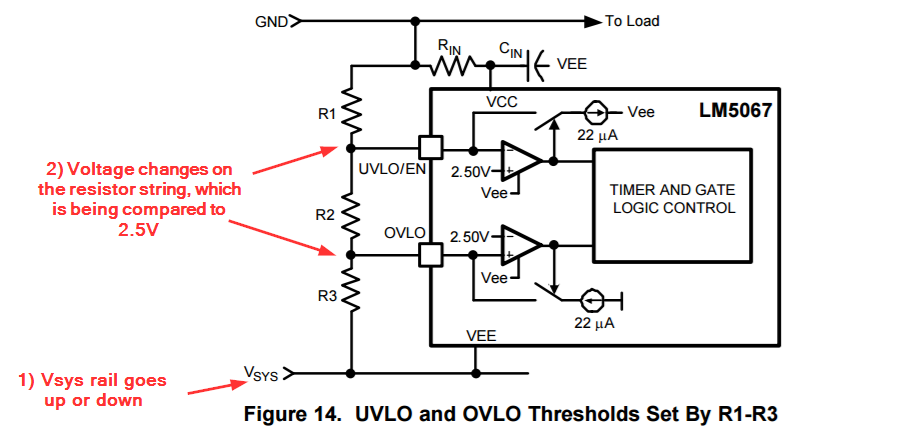I hope I am making a silly mistake, but im having trouble understanding how the OVLO / UVLO pins work.
the datasheet says that these pins have a threshold that is referenced to Vee. I am trying to monitor a negative voltage with this part. I have a -48V supply connected to Vee with a Vcc of gnd. my goal is to disable when the voltage is outside the window -44 to -52. but if the OVLO / UVLO pins are referenced to the voltage that is monitored how will the threshold ever be reached?
for example:
Vee= -48V that means UVLO threshold its at -48+2.5 = -45.5V. if the -48 volt supply drops to -44V( less than the -45.5V threshold) the threshold is no longer -45.5 is is now -44+2.5 = 41.5..... and so on.
Am interpreting the data sheet wrong?





